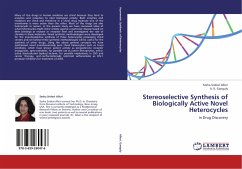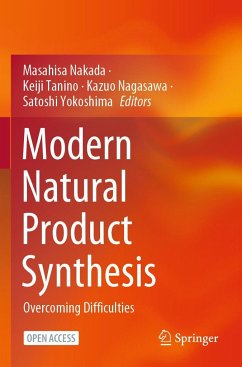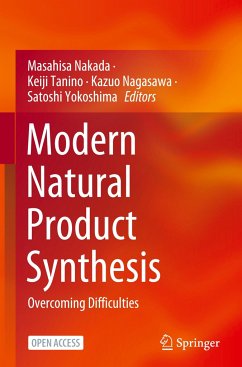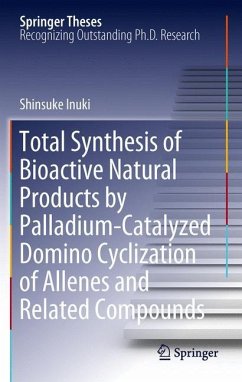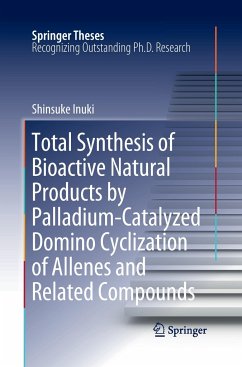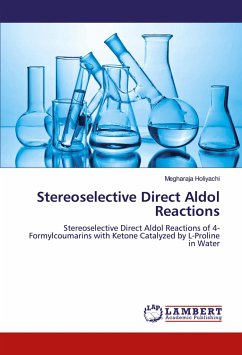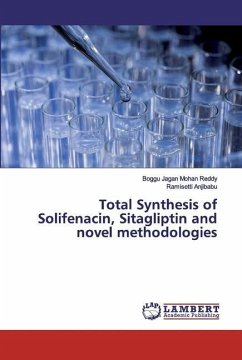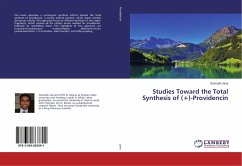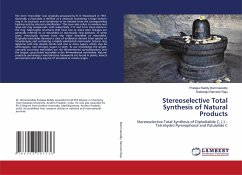
Stereoselective Total Synthesis of Natural Products
Stereoselective Total Synthesis of Diplodialide C, (-) - Tetrahydro Pyrenophorol and Patulolide C
Versandkostenfrei!
Versandfertig in 6-10 Tagen
36,99 €
inkl. MwSt.

PAYBACK Punkte
18 °P sammeln!
The term "macrolide" was originally proposed by R. B. Woodward in 1957. Generally, a macrolide is defined as a molecule containing a large lactone ring in its structure and considered to be derived from the corresponding hydroxy acid by internal esterification. This term also refers to medium and large size ring compounds, with respectively, 7-11 and 12 or more atoms in the ring. Macrocyclic structures that have one or more ester linkages are generally referred to as macrolides or macrocyclic ring lactones. In some cases, macrocyclic lactams have also been described as macrolides. Originally m...
The term "macrolide" was originally proposed by R. B. Woodward in 1957. Generally, a macrolide is defined as a molecule containing a large lactone ring in its structure and considered to be derived from the corresponding hydroxy acid by internal esterification. This term also refers to medium and large size ring compounds, with respectively, 7-11 and 12 or more atoms in the ring. Macrocyclic structures that have one or more ester linkages are generally referred to as macrolides or macrocyclic ring lactones. In some cases, macrocyclic lactams have also been described as macrolides. Originally macrolides denoted a class of antibiotics derived from species of Streptomyces and containing a highly substituted macrocyclic lactone ring aglycone with few double bonds and one or more sugars, which may be aminosugars, non-nitrogen sugars or both. To our knowledge the largest naturally occurring macrolides are the 60-membered quinolidomicins and the largest constructed macrolide is the 44-membered swinholide. Natural products containing a macrolactone framework are found in plants, insects and bacteria and they may be of terrestrial or marine origin.




